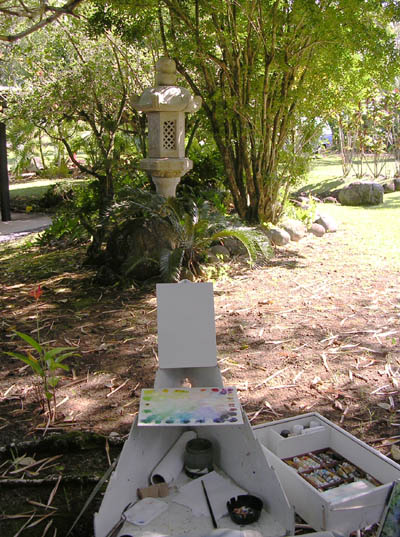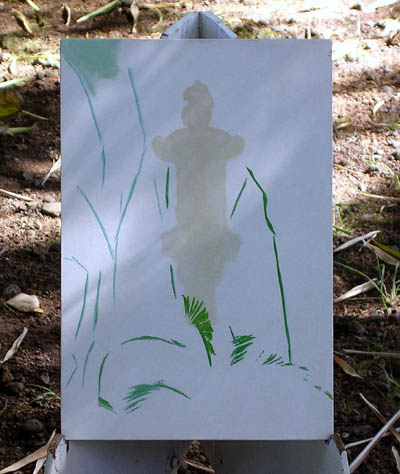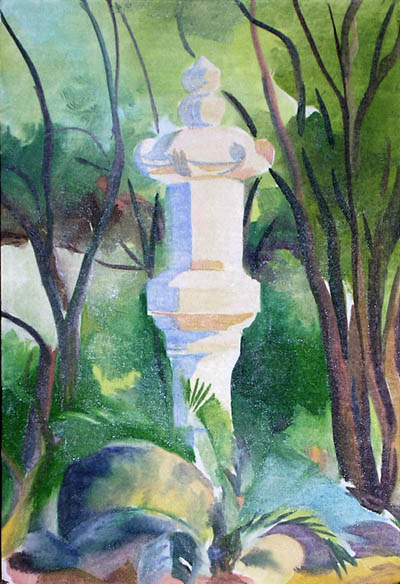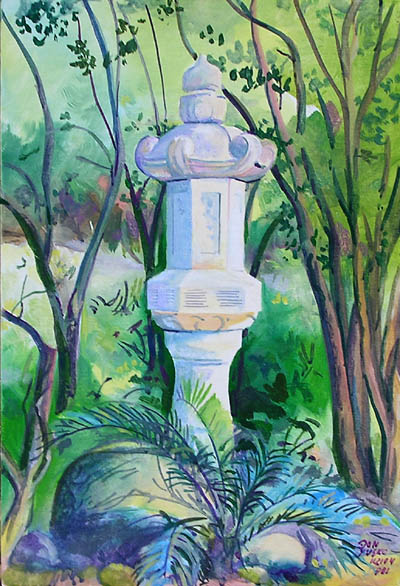|
BLACK OIL IS MADE of purified raw linseed oil cooked with orange litharge and added mastic.
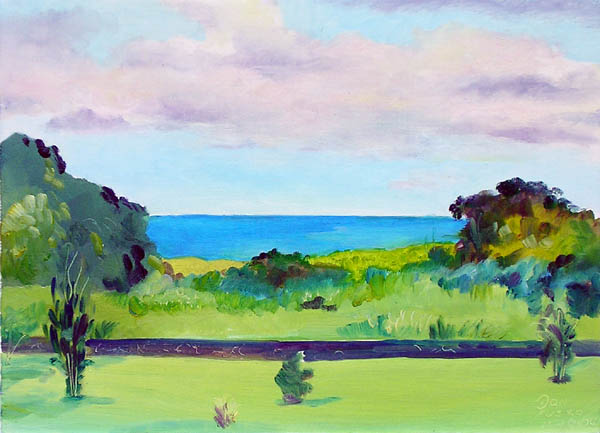 I had finished painting by 6PM, the night was in the 60's, 6AM I checked the painting, it was dry and shinny!
11-21-04, Heavenly Hana Inn Dolomite Lantern, Maroger's medium plus 3 pigments and white. Indian Yellow, Old Holland, quin magenta PR122 Daniel Smith, cyan PB15 Grumbacher
I put a small amount from the tube in a tub, and added turpentine. It was much lighter then copal and had a lot of the characteristics. Copal is nice to paint with, I love Maroger's. First I coated the panel with the thinned mix. I didn't have to add wax to make it slide, it just does it. Like an E ticket. It doesn't pick up the stroke before, in the same way that Venetian balsam does. It starts setting in a couple of hours, like a heavy dose of drier. All linseed oil browns, it's the nature of the beast. Cobalt drier is many times more browning then linseed oil. It's not as difficult to keep the good painting consistency as with stand oil. England; J.C. Ibettson, "An Accidence, or Gamut, of painting in Oil", 1803, page 15; under the heading of "Megilp"... "The very best pale is made by boiling the linseed oil in an earthen pan, at the bottom of which white lead is spread a quarter of an inch thick; do not stir it at all until it turns a brown ash colour, when it will have imbibed a sufficient quantity of lead to turn the mastic varnish and itself into a stiff jelly." In France, 1827, P. L. Bouvier wrote a book for beginning painters (Manual Des Jeune Artistes) and included the following: Name: Macgilp, Maguilp, Magelp, Magilp, Meguilp; Materials: Linseed oil boiled on Litharge; strong mastic varnish; materials ratio: 1:1 or 2:1.
Clint (1855), Under the heading of Brown Megilp, this author writes: "Brown Megilp is composed of equal quantities of strong Drying Oil and strong Mastic Varnish, well shaken or stirred together. If a small quantity only be required, put a given number of drops of each on the palette, and rub them well together with a knife, when they will produce a strong transparent jelly; this is an old-fashioned vehicle, but in my opinion a very good one." Gumption, there is a slightly differing concoction known as "Gumption". An invention of Julius C. Ibettson, Gumption utilized all the basic ingredients except the turpentine. The Mastic resin was mechanically ground up into the linseed oil, a small amount of Lead Acetate was required for the yellowish opaque glop to form into a stiff jelly. More oil was added until a favorite consistency was achieved. Some tests show Gumption to be a better-lasting medium than Meguilp. I've always said it made more sense to use lead acetate instead of lead oxide. I would rather have the clear sugar of lead or the white calcined stannum oxide, like the Egyptians used. Anything but the deep purple of cobalt. Oil yellows but cobalt drier yellows much worse.

These links are to other 3 primary color paintings, the pigments are: Dry Pigments;
Food Coloring
Oil Paints,
Water Colors,
Children painting with Food Coloring Colors First Grade learning the primary colors.
NEXT PAINTING, Night Painting  Order this complete color course on DVD, $35.00. Order only a 5"X5" Laminated Real Color Wheel $10.00.
|
